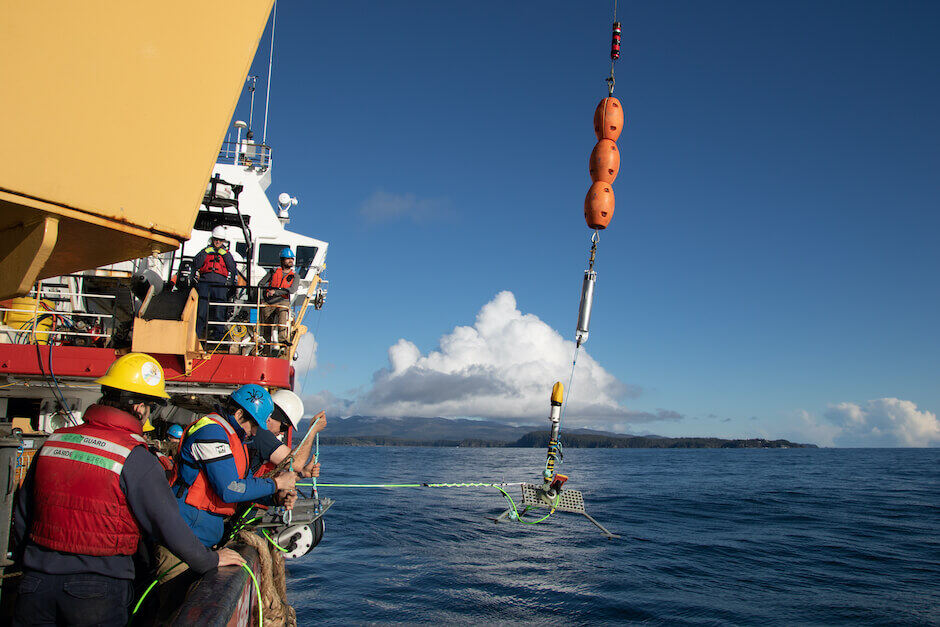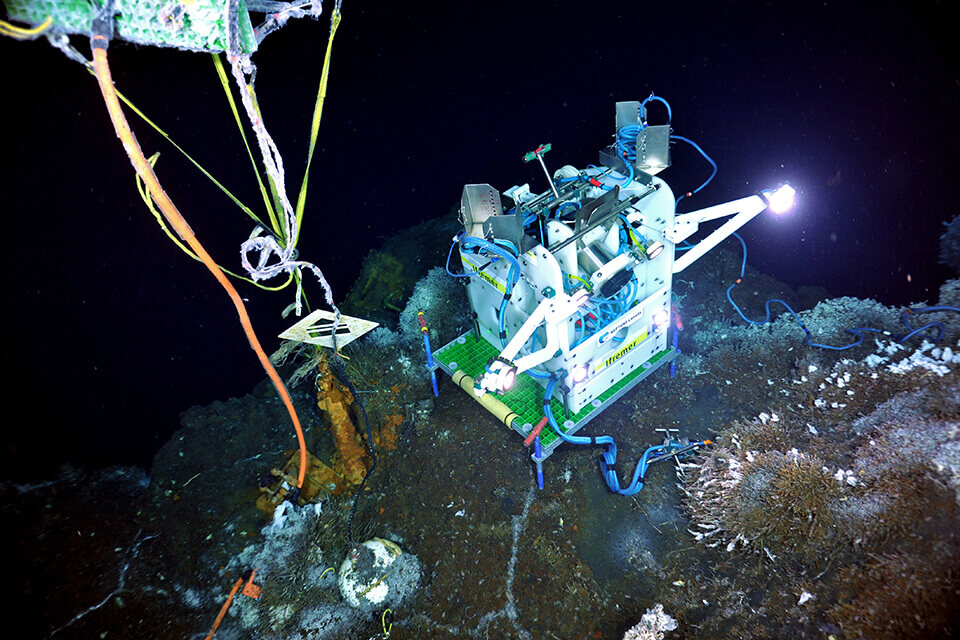

An $8.7-million investment into the University of Victoria’s Ocean Networks Canada (ONC) advances ocean-observing infrastructure on all three of Canada’s coasts, aligning a nationwide plan to safeguard the country’s ocean and coastal ecosystems for future generations.
The support by Fisheries and Oceans Canada (DFO), announced on Wednesday by Minister Bernadette Jordan, means ONC will continue to deliver data in real time to advance science and provide communities, governments and industry with ocean knowledge to make informed decisions. Since 2017, ONC has worked with DFO to deliver products anchored in Canada’s Oceans Protection Plan.
Canada invested in the protection of the ocean through ONC 15 years ago, making history as the world’s first large-scale, interactive, real-time portal into the ocean. The ocean-observing infrastructure has benefited diverse sectors such as fisheries and aquaculture, marine transportation, ocean technology and ecotourism, says Moran.
These further investments in ONC support Canada’s growing blue economy, which depends upon the sustainable use and management of our ocean resources.
“Today’s investment in marine science and innovation will have a major impact and ensure Canada is at the forefront of oceans research, management, climate solutions and the blue economy. This funding shows Canada’s unwavering commitment to protecting our oceans, coastlines and industries for future generations,” says Kevin Hall, UVic’s president and vice-chancellor.
World-leading ocean-observing infrastructure
Building on ONC’s core funding provided through the Canada Foundation for Innovation, the match-funding will support infrastructure on all three of Canada’s coastlines.
Oceanographic radar provides real-time information on the speed and direction of surface currents and waves to better inform navigation and emergency response, including ships in distress and oil spills. The continuous long-time series data collected by these instruments contribute to Canada’s marine safety and marine mammal protection.


ONC’s hydrophone networks measure and monitor underwater noise in both the deep sea and busy coastal waterways such as the Strait of Georgia, home to Canada’s biggest port, Vancouver. The free, continuous, near real-time data helps researchers and others understand how shipping noise impacts key endangered killer whale habitats. ONC’s hydrophone data was also used globally to inform research into reduced underwater noise during the COVID-19 shutdown.
Since 2009, ONC’s deep ocean sensors have provided real-time monitoring of Canada’s first marine protected area at the Endeavour Hydrothermal Vent Fields. ONC’s cabled observatories, remote control systems, interactive sensors, and big data management enables evidence-based decision-making for marine science, ocean management, disaster mitigation and marine protection and conservation.







































